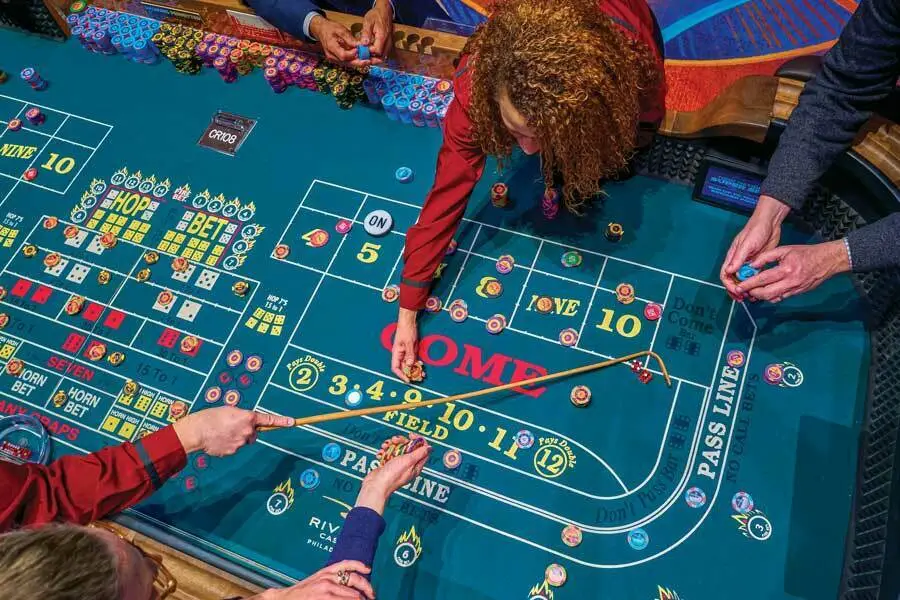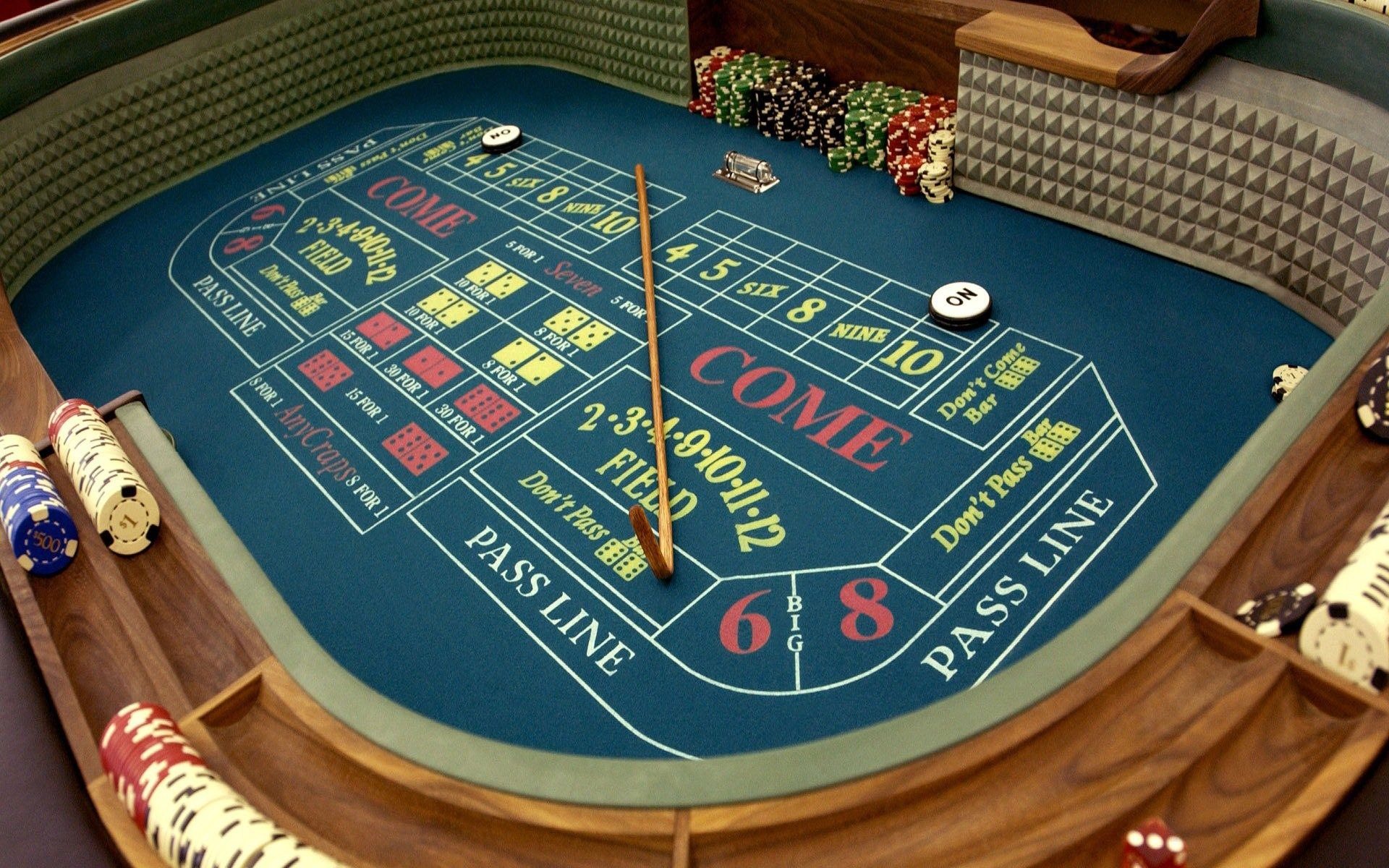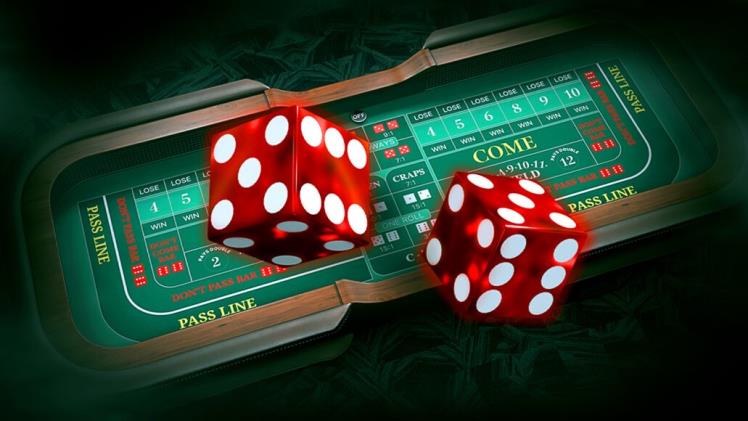Craps is the most exciting table game in the casino. The crowd, the shouting, the numerous bets, the rolling dice—it all creates an action-packed atmosphere. A beginner is often lost not by the complexity of the rules, but by the pace and the number of terms. To understand how to play craps as a beginner, it’s important not to understand the entire game at once, but rather the structure: phases, basic bets, and safe strategies. Everything else is just superstructure.
How does a beginner play craps? First, let’s understand the playing field.
At first, the craps playing field looks intimidating: tables, bright letters, and scattered sentences. The table structure follows a strict logic. Each area is responsible for a specific type of bet, and the layout itself is designed for symmetry, comfort, and speed of play.
Player and Dealer Areas
 The table surface is divided into two equal sections, with each half serving a separate portion of the players. This allows two groups to place bets at the same time without disturbing each other. In the center are the areas for so-called “propositional” bets: on individual numbers, combinations, and a roll. Moves are made exclusively by the dealers; players have limited access to them.
The table surface is divided into two equal sections, with each half serving a separate portion of the players. This allows two groups to place bets at the same time without disturbing each other. In the center are the areas for so-called “propositional” bets: on individual numbers, combinations, and a roll. Moves are made exclusively by the dealers; players have limited access to them.
Key Areas:
- The pass line is the key area where each game begins. This line runs along the edge of the table in front of each player.
- “Don’t Pass” is a parallel area with the opposite meaning. Used by those betting against the shooter.
- Field: A large rectangular area for betting on a single roll with fixed payouts.
- “Place Bets”: An area for betting on specific numbers (4, 5, 6, 8, 9, 10).
- Come/Don’t Come: Similar to Pass/Don’t Pass, but used after the game has started.
- Big 6 / Big 8: Simplified bets on whether a 6 or 8 will be rolled before a 7.
Each area has a different color, label, and location. The challenge for a beginner learning to play craps is to recognize its position, find the pass line, and focus on the basic mechanics of the game without being distracted by excessive bets.
Participants in the Process
Several roles are played simultaneously on the table. The main character is a shooter. This is the player who rolls the dice and starts the roll. Their roll affects the fate of all bets placed on the Pass Line and Don’t Pass Line. Participants who do not roll the dice participate as bettors, that is, they bet money on the outcome of the shooter’s actions.

Dealers act as intermediaries between the player and the group. They monitor bets, manage payouts, announce roll results, control the flow of the game, and maintain the pace. In larger casinos, there are up to four people at the table: two dealers, a boxman, and a stickman who controls the dice.
Where to Start as a Beginner: Basic Steps on How to Play Craps
Each beginning in craps is a separate scene. Changing the shooter, opening a new circle, placing bets—all of this begins with the first roll, the so-called come-out roll.
First Roll: Laying the Groundwork
The shooter takes two dice and rolls them to the opposite side. This is a coming-out. Before the roll, all those who wish to place chips on the Pass Line (a bet on the shooter’s success) or on the Don’t Pass (a bet against the roll) must place chips.
Results:
- 7 or 11 – instant win on the pass line.
- 2, 3, or 12 – immediate loss on the pass line (these numbers are called “craps”).
- 4, 5, 6, 8, 9, or 10 – the point is settled.
Once the point is determined, the shooter continues rolling the dice. Their task is to roll the point again before a 7 is rolled. If successful, the Pass Line wins. If a 7 appears first, you lose and the round ends.
Point: Task Change
The tip converts the roll into a simple action and a goal. A license plate with the corresponding number appears on the table. All players know that today’s shooting games are no longer based on luck, but on accuracy. This creates a completely different pace and intensity.
In this phase, the player can:
- Support the pass line with an odds bet, which increases the potential payout.
- Place a new Come bet, which starts its own “mini-game” with the same logic: your point and your shots.
Beginners who don’t understand the difference between the phases often place their bet at the wrong time. For example, you bet on the pass line when the point has already been determined. Although it’s not prohibited, it loses its meaning: the chances of winning have already changed.
Probability Analysis at the Beginning
How to Play Craps for Beginners: The player must understand that this is not a chaotic game, but a system with fixed mathematics.
Probability of Outcomes in Case of a Come Out:
- 7 to 6 combinations rolled.
- 11 – 2.
- 2, 3, 12 – 4 total.
- All Others (Points) – 24.
Result: In 8 out of 36 cases, the Pass Line bet wins immediately; in 4 cases, it loses; in 24 cases, the game starts on the point. These numbers explain why the Pass Line is considered safe: it offers maximum control with minimal house edge.
Safe Bets: From Simple to Safe
A beginner should avoid exotic bets with high odds. They are tempting, but they work against the player. The basis for winning are simple paylines with minimal house edge.
Beginner Bets:
- Pass Line – Standard. Win with a 7 or 11 on a come-out roll.
- Don’t Pass: Bet against the shooter. Win on a 2 or 3.
- Come: Similar to “Pass,” but after placing a point.
Odds: An additional bet on “Pass” or “Come.” It increases the payout without increasing the house’s edge.
These bets form the basis of beginner craps strategy. They offer a fair return, control the pace, and give you the opportunity to understand the logic of the game without unnecessary risks.
Winning Tactics: Discipline + Math
In craps, psychology plays as important a role as numbers. A beginner should follow three tactical rules:
- Play only on the Pass Line + Odds. This reduces the house’s edge to a minimum (less than 1.5%). For example, if you bet 500 ₽ on Pass and 1000 ₽ on Chance, the potential profit outweighs the risk.
- Avoid betting on a roll. All bets on a single outcome are a trap. The probability of rolling a 12 is 1 in 36, and the payout is only 30 to 1. The math isn’t on the beginner’s side.
- Set a session limit. Set a loss limit and stop when you win. If you win three games in a row, don’t increase the bet. If you lose two, take a break.
How to Play Craps as a Beginner and Avoid Mistakes
The following section contains an expanded list and answers the question: How to play craps as a beginner without making serious mistakes? Common mistakes and how to avoid them:
- Rash shooting to the center of the table. Intermediate bets are the riskiest. Study them first and then decide if you want to participate.
- Playing without understanding the meaning. You can’t bet without knowing what the game is about. Mistake – Betting on Come without a point.
- Ignoring the odds: a bet with no casino advantage. If you’re careless, you miss out on potential profits.
- Bet on 2, 12, or “Any Craps.” Low odds – high risk. For a beginner, this is the path to zero.
No plan: You can’t sit down to play without calculating your bankroll. The session isn’t a spectacle, but a calculation.
Follow the crowd. Shouts and emotions aren’t a strategy. Decisions should be made according to a plan, not based on the enthusiasm of others.

Rejection of online training.
Before going to the room, it’s worth playing at least 50 hands online. This reduces stress and speeds up adaptation.
Online Craps: Practice Without Pressure
For beginners, playing craps online is the best way to learn the game of casino craps without losing money or control. The online platform doesn’t shout, rush, or require haste. Here you can pause, reflect, and switch between strategies.
Advantages of the Format:
- Full control over the pace of the game.
- On-screen instructions.
- Ability to maintain a parallel rate table.
- Free versions for risk-free practice.
Conclusion
 Strategy buys you more time; craps isn’t a lottery. A strong player controls the process and doesn’t rely on luck. Tactics work when applied systematically. For a beginner who wants to learn how to play craps, the path to success begins with the pass line, the odds, and rigorous calculation. Everything else comes from experience.
Strategy buys you more time; craps isn’t a lottery. A strong player controls the process and doesn’t rely on luck. Tactics work when applied systematically. For a beginner who wants to learn how to play craps, the path to success begins with the pass line, the odds, and rigorous calculation. Everything else comes from experience.
 en
en  de
de  ar
ar  es
es  hi
hi  fr
fr  nl
nl  ru
ru  it
it  pt
pt  el
el 










